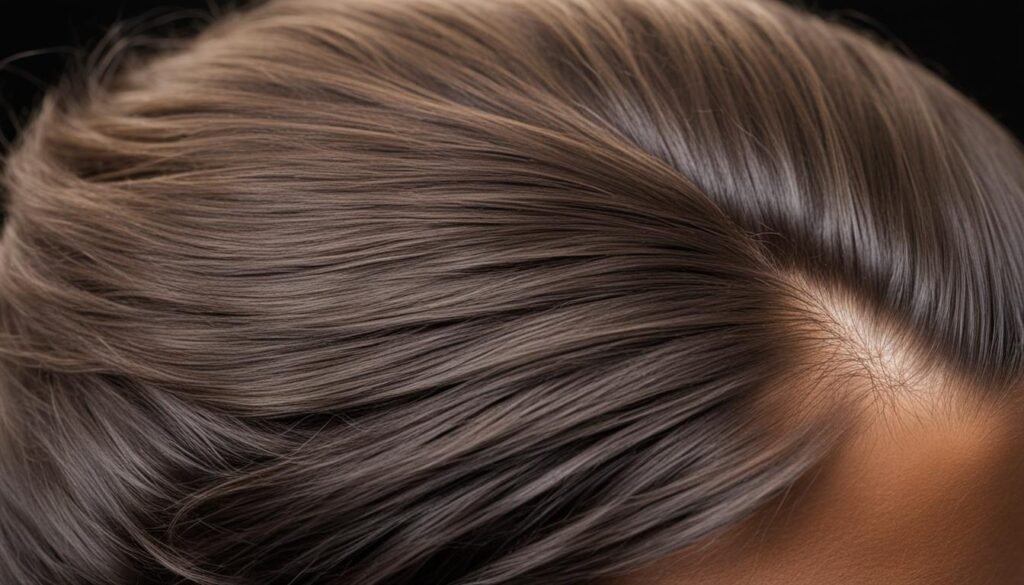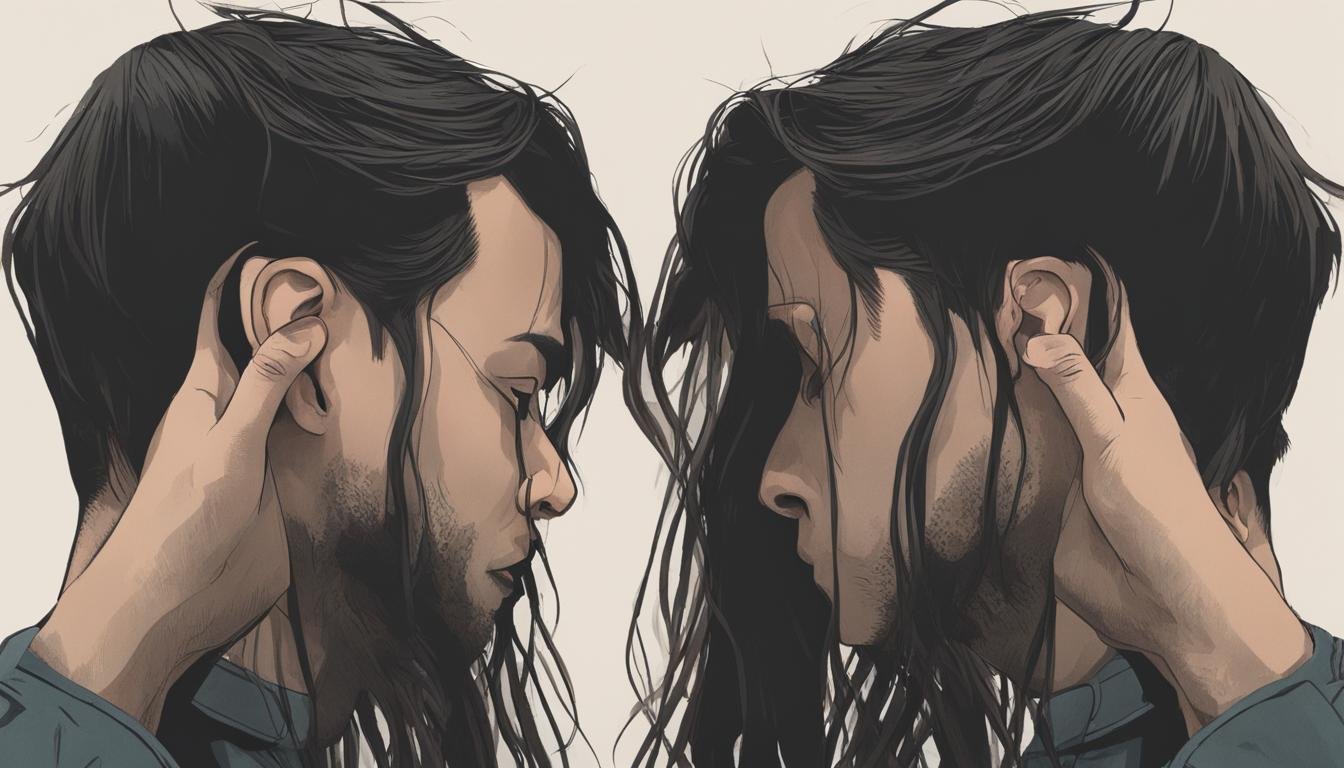Discovering that your hair is thinning at the age of 16 can be distressing and confusing. Hair loss in teenagers is not uncommon, and there can be various factors contributing to this issue. Understanding the potential causes and seeking proper guidance is crucial for managing and preventing further hair loss.
In this article, we will explore the common causes of hair loss in teens, including genetic factors, hormonal imbalances, medical conditions, and lifestyle habits. By gaining insights into these aspects, you’ll be empowered to address your hair concerns and find appropriate solutions.
If you’ve been wondering why your hair is thinning at such a young age or if you’re a concerned parent seeking answers for your teenager, continue reading to learn more about teenage hair loss and what can be done to combat it.
Common Causes of Hair Loss in Teens
Hair loss can be a distressing experience for teenagers. Understanding the common causes of hair loss in adolescents is crucial for effective prevention and treatment. Some key factors that contribute to hair loss in teens include:
- Genetic Factors: Genetic conditions, such as androgenetic alopecia, play a significant role in hair loss among teenagers. This condition, also known as male or female pattern baldness, is inherited and can lead to gradual thinning of the hair.
- Hormonal Imbalances: Hormonal changes during adolescence can trigger hair loss. Imbalances in hormones like testosterone and estrogen can disrupt the hair growth cycle, resulting in thinning hair.
- Autoimmune Conditions: Some autoimmune conditions, like alopecia areata, can cause patchy hair loss in teenagers. These conditions occur when the immune system mistakenly attacks the hair follicles.
- Malnutrition: Inadequate nutrition can affect hair health, leading to thinning and loss. Poor diet or eating disorders can deprive the body of essential nutrients necessary for hair growth.
- Thyroid Conditions: Imbalances in thyroid hormones can contribute to hair loss in adolescents. Hypothyroidism and hyperthyroidism can disrupt the normal hair growth cycle.
- Medications and Medical Treatments: Certain medications or medical treatments, such as chemotherapy, can cause hair loss as a side effect. This type of hair loss is usually temporary and regrowth occurs once the treatment is completed.
- Hair Treatments and Styling Practices: Excessive use of chemical hair treatments, heat styling tools, and tight hairstyles (like braids and ponytails) can damage the hair follicles and lead to hair thinning or breakage.
- Traction Alopecia and Trichotillomania: Traction alopecia occurs when constant tension on the hair leads to hair loss, often due to tight hairstyles or hair extensions. Trichotillomania is a compulsive urge to pull out one’s hair, which can result in noticeable bald patches.
Identifying the underlying cause of hair loss is essential in developing an appropriate treatment plan and preventing further hair thinning in teens. Seeking medical advice and addressing the root cause can help promote healthy hair growth.
Genetic Hair Loss in Teens
Genetic hair loss, also known as male pattern baldness or female pattern baldness, can affect teenagers. This form of hair loss, known medically as androgenetic alopecia, is inherited from family members and can manifest differently in males and females.
In males, genetic hair loss typically begins with a receding hairline and gradual balding at the crown of the head. Females, on the other hand, may experience gradual thinning along the part of their hair. It’s important to note that the severity and progression of genetic hair loss can vary from person to person.

If there is a family history of male or female pattern baldness, teenagers are more likely to experience genetic hair loss. It is not uncommon for the symptoms to start appearing during adolescence, as genetic hair loss can begin as early as in the teenage years.
While genetic hair loss can be distressing for teenagers, it is important to remember that it is a naturally occurring process and is not indicative of any underlying health issues. However, anyone experiencing significant hair loss should consult a healthcare professional for a proper diagnosis and to discuss possible treatment options.
| Genetic Hair Loss in Teens | Characteristics |
|---|---|
| Male Pattern Baldness | – Receding hairline – Gradual balding at the crown |
| Female Pattern Baldness | – Gradual thinning along the part of the hair |
It is important for teenagers with genetic hair loss to understand that there are various treatment options available to help manage the condition and promote healthy hair growth. These may include medications, laser therapy, and lifestyle modifications.
Next, we will explore the hormonal and medical causes of hair loss in teens, shedding light on other possible factors contributing to hair thinning during adolescence.
Hormonal and Medical Causes of Hair Loss in Teens
Hormonal imbalances and underlying medical conditions can be contributing factors to hair loss in teenagers. Understanding these causes is crucial in identifying and addressing the issue effectively. Consulting a healthcare professional is recommended to diagnose and treat hormonal imbalances and medical conditions related to hair loss in teens.
Hormonal Imbalances
Hormonal imbalances, such as those seen in conditions like polycystic ovary syndrome (PCOS), can play a role in hair loss among teenagers. PCOS is a hormonal disorder that affects the ovaries and can lead to the production of excessive androgens, or male hormones. This hormonal imbalance can contribute to hair thinning or loss in both males and females.
Medical Conditions
Other medical conditions can also cause hair loss in teens. Thyroid conditions, including hypothyroidism or hyperthyroidism, can disrupt the normal functioning of the thyroid gland and lead to hair thinning. Autoimmune disorders such as lupus can cause inflammation and damage to hair follicles, resulting in hair loss. It is essential for teenagers experiencing hair loss to be evaluated by a healthcare professional to determine if any underlying medical conditions are causing their hair loss.
Consulting a healthcare professional is crucial in diagnosing and treating hormonal imbalances and medical conditions related to hair loss in teens. The healthcare provider will perform a thorough evaluation, which may include physical examinations, medical history assessments, and blood tests to identify the underlying cause. Once a diagnosis is made, appropriate treatment options can be explored to address the specific hormonal or medical cause of hair loss.
| Cause | Description |
|---|---|
| Polycystic Ovary Syndrome (PCOS) | A hormonal disorder that can result in excessive androgen production, causing hair loss in teenagers. |
| Thyroid Conditions | Hypothyroidism, an underactive thyroid, or hyperthyroidism, an overactive thyroid, can disrupt the normal hair growth cycle and lead to hair thinning. |
| Autoimmune Disorders | Conditions like lupus can cause inflammation and damage to hair follicles, leading to hair loss. |
Lifestyle and Styling Factors
Certain lifestyle and styling factors can contribute to hair loss in teens. It’s essential to be aware of these factors and make conscious choices to minimize hair damage and breakage. The following practices should be considered:
- Avoid excessive heat styling: Overuse of heat tools like straighteners, curling irons, and blow dryers can lead to hair damage. Limit heat styling and always use a heat protectant spray before applying any heat to your hair.
- Be mindful of hair treatments: Frequent coloring, perming, or chemical treatments can weaken the hair shaft and cause breakage. Choose gentle treatments and give your hair enough time to recover between sessions. Natural alternatives, such as henna, can be a safer option.
- Protect your hair from chlorine: Chlorine from swimming pools can strip the hair of its natural oils, causing it to become dry and brittle. Before swimming, wet your hair with clean water and wear a swim cap to minimize chlorine exposure.
- Opt for loose hairstyles: Tight hairstyles like buns, ponytails, or braids can put excessive stress on the hair follicles, leading to traction alopecia. Choose looser styles that don’t pull on the hair and vary your hairstyles to distribute the tension evenly.
By practicing healthy hair care habits and avoiding excessive styling practices, you can minimize hair damage and reduce the risk of further hair loss.
Seeking Medical Help for Teenage Hair Loss
If your teenager is experiencing significant hair loss, it is important to consult a doctor for a proper diagnosis. Hair loss can have various causes, and a doctor can help identify the underlying reason.
During a medical evaluation, the doctor will conduct a physical examination of the scalp, review the teenager’s medical history, and may perform blood tests. In some cases, a scalp biopsy may also be necessary to determine the exact cause of hair loss.
Treatment options for teenage hair loss depend on the underlying cause. In some cases, medications may be prescribed to address hormonal imbalances or genetic factors. Lifestyle changes, such as adopting a balanced diet and avoiding excessive heat styling, can also promote healthy hair growth. Additionally, other interventions like scalp treatments or laser therapy may be recommended to stimulate hair regrowth.
It is crucial to address hair loss in teenagers early on to prevent further progression and support healthy hair regrowth. If you notice significant hair loss in your teenager, don’t hesitate to seek medical help for a proper diagnosis and appropriate treatment options.
